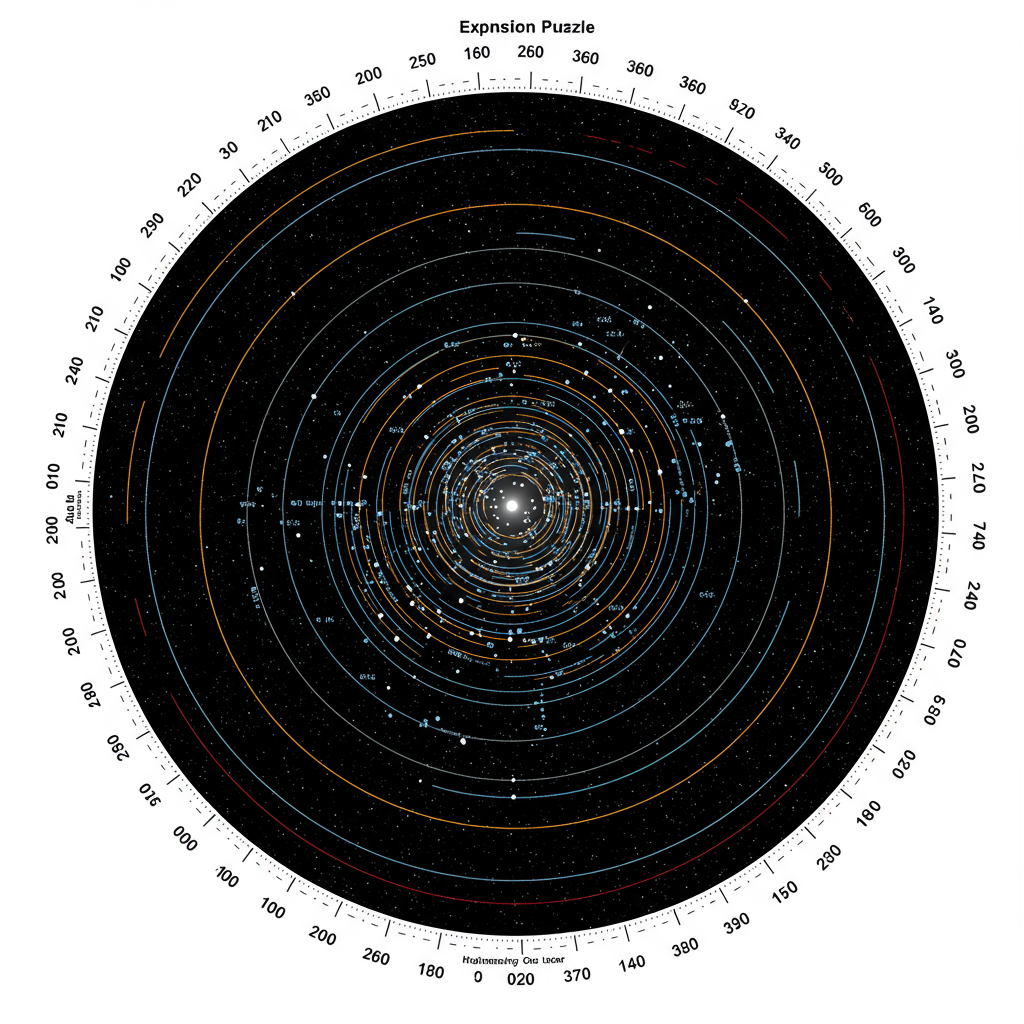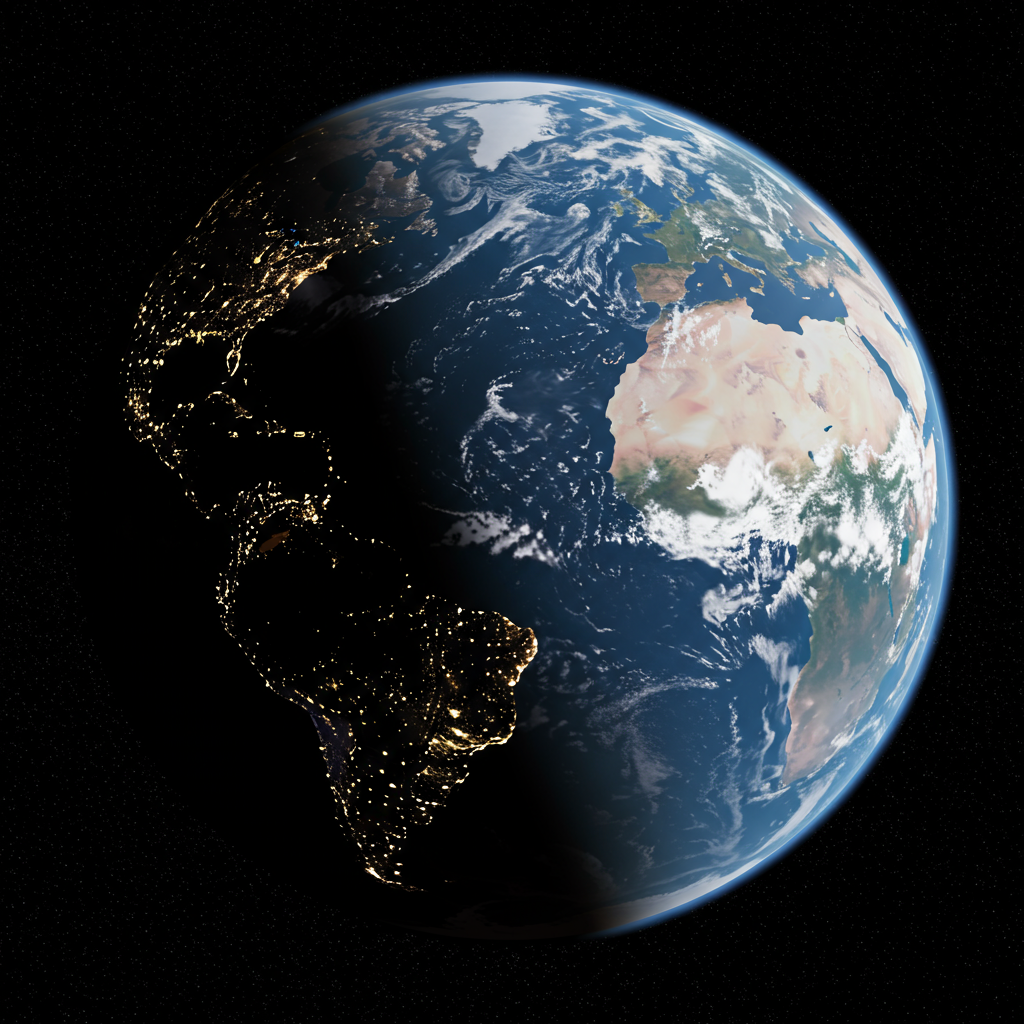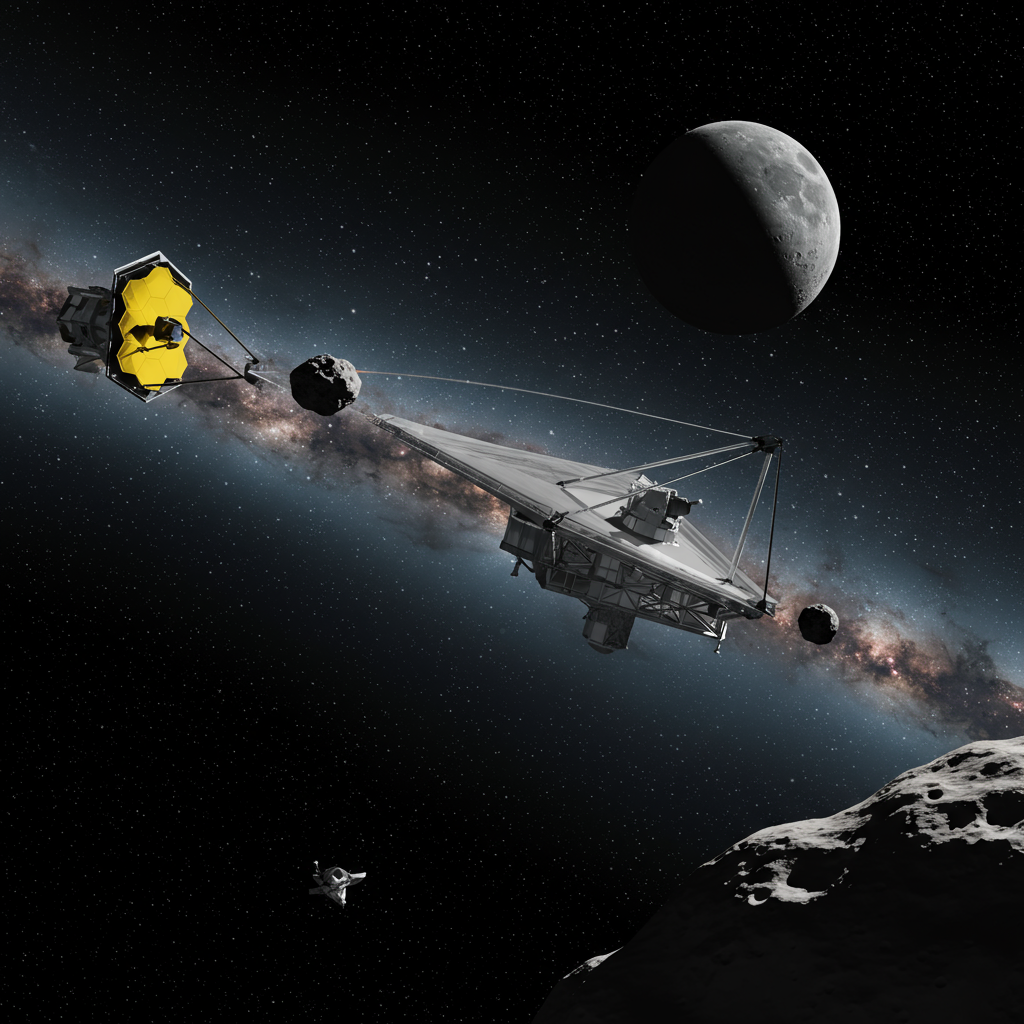The universe is expanding, but determining the exact rate of this expansion has become one of cosmology’s most significant puzzles. Measurements taken using different methods yield slightly different numbers, leading to what scientists call the “Hubble tension.” This discrepancy challenges our standard model of the universe, prompting researchers to propose bold new ideas. One intriguing possibility gaining traction is that our own galaxy, the Milky Way, might reside in a very special, unexpectedly empty place: a large cosmic void.
The Universe’s Expansion Puzzle: What is the Hubble Tension?
Modern cosmology tells us the universe is not only expanding but accelerating. The rate of this expansion, quantified by the Hubble constant, is crucial for understanding the universe’s age, size, and ultimate fate. However, different techniques for measuring this constant yield conflicting results.
One set of methods relies on observations of the distant, early universe, particularly the cosmic microwave background (CMB) – the afterglow of the Big Bang. Data from missions like the Planck satellite predict a specific, slower expansion rate based on conditions in the very early universe.
Another set of methods uses “local” cosmic yardsticks like Type Ia supernovae and Cepheid variable stars in the nearby, more recent universe. These measurements consistently suggest a faster expansion rate – about 9-10% higher – than the early-universe predictions. This persistent conflict, the Hubble tension, hasn’t disappeared even with increasingly precise data, hinting at a potential fundamental issue with our current standard model, known as Lambda Cold Dark Matter (ΛCDM).
The Cosmic Web: Structure and Voids
The standard cosmological model assumes the universe is largely uniform and homogeneous on vast scales, typically hundreds of millions of light-years or more. However, gravity acting over billions of years has sculpted the universe’s structure on smaller scales. Galaxies aren’t scattered randomly; they congregate into clusters and groups, forming a vast, interconnected network called the cosmic web.
This three-dimensional web consists of dense nodes (galaxy clusters), filamentary strands (lines of galaxies), and enormous, relatively empty regions between them known as cosmic voids. While not perfectly devoid of matter – dark matter and some scattered galaxies are present – voids have significantly lower matter density compared to the cosmic average.
The Bold Hypothesis: Living Inside a Cosmic Void
A provocative proposal suggests the Hubble tension might be resolved if our galaxy, the Milky Way, is located near the center of one of these massive cosmic voids. Dr. Indranil Banik from the University of Portsmouth is a leading proponent of this idea, which was presented at the National Astronomy Meeting.
How a Void Creates Apparent Faster Expansion
Imagine our solar system, our galaxy, situated relatively close to the middle of a vast, underdense void. The denser strands and nodes of the cosmic web surround this void. Gravity from these external, denser regions would exert a pull on the matter within the void, including our galaxy and nearby galaxies.
This net outward gravitational pull would cause matter to slowly flow away from the void’s center towards its denser edges. As the void gradually empties out from our perspective, galaxies within it would appear to be moving away from us faster than they would in a perfectly uniform universe. Dr. Banik explains that this effect gives the appearance of a faster local expansion rate when measured using nearby galaxies, potentially explaining the discrepancy with the expansion rate derived from the early universe.
Challenges to the Standard Model
This void hypothesis is compelling because it offers a local explanation for a seemingly local problem (the faster expansion measured nearby). However, it also poses a significant challenge to the standard ΛCDM model.
For the void to explain the observed Hubble tension, estimates suggest it would need to be incredibly large – perhaps a billion to two billion light-years across. Furthermore, its density would need to be substantially lower than the cosmic average – estimates range from about 20% to even 50% below typical universal density.
A void this large and this underdense would be extremely rare within the standard ΛCDM framework, potentially a one-in-a-billion statistical fluke. If such a void exists and significantly impacts our local measurements, it might imply that the universe isn’t as homogeneous on very large scales as the standard model assumes, or that the model itself is incomplete.
Evidence Supporting the Void Hypothesis
Despite the challenge to the standard model, several lines of observational evidence appear consistent with the idea that we reside within a large underdense region.
Galaxy Counts
Direct counts of galaxies in our cosmic neighborhood indicate a lower number density compared to surrounding regions. This aligns with the expectation if we are indeed inside a void, which by definition contains fewer galaxies than average.
The “Sound of the Big Bang”: Baryonic Acoustic Oscillations
Baryonic Acoustic Oscillations (BAOs) are essentially fossilized sound waves from the very early universe, imprinted in the large-scale distribution of matter. These oscillations act like a cosmic “standard ruler.” Their characteristic size can be used to measure distances and chart the universe’s expansion history.
Analyzing BAO data, researchers found that measurements are consistent with our local group of galaxies residing within a void. One study found that a model incorporating a billion-light-year void around Earth is significantly more likely – potentially 100 million times more likely – than a void-free model when compared against BAO data and CMB observations.
Bulk Flows and Peculiar Velocities
Studies analyzing “bulk flows” – the average velocity of galaxies within large regions – have also presented tensions with the standard model. Recent analyses of catalogs like CosmicFlows-4 have found that galaxy flows on scales of hundreds of millions of light-years are faster than predicted by ΛCDM, representing a statistically significant discrepancy.
Some alternative models, like the neutrino Hot Dark Matter (νHDM) framework, which naturally predict deeper voids and stronger large-scale flows, align better with these observations, especially when considering an observer located within a void. The peculiar velocity of our own Local Group of galaxies (deviation from the smooth Hubble expansion) also fits within ranges predicted by models featuring a void.
Alternative Models and Dark Energy
The discussion around cosmic voids and the Hubble tension naturally intersects with the concept of dark energy, the mysterious force thought to be driving the universe’s accelerated expansion.
The Timescape Model Perspective
Some researchers propose that the observed acceleration might not require dark energy at all. The “timescape model,” for instance, suggests the apparent acceleration is an illusion resulting from the large-scale lumpiness of the universe. In this view, voids, which expand faster due to weaker gravity, dominate the cosmic landscape, causing clocks in voids to run faster relative to denser regions. This difference in “cosmic time” could create the appearance of accelerated expansion from our perspective within a void. A study using the Pantheon+ supernova dataset found that the timescape model showed a “very strong preference” over the standard dark energy model, particularly when including nearby supernovae potentially affected by local structure.
Scientific Debate and Counterarguments
While intriguing, the idea that inhomogeneity alone replaces dark energy is highly debated. Critics argue that the universe is observed to be remarkably homogeneous on the very large scales required by models like timescape. CMB data shows initial density fluctuations were tiny, and current large-scale structure surveys indicate density differences on the largest scales are far too small (~0.01%) to produce the significant effects required by timescape.
Furthermore, theoretical calculations, even accounting for the non-linear effects of inhomogeneities, suggest that the energy contribution from cosmic lumpiness is small and behaves in a way that would actually decelerate the universe, not accelerate it like dark energy. Most cosmologists still view dark energy as necessary to explain the full body of evidence, including the CMB, BAOs (interpreted in a homogeneous universe), and supernovae data, beyond just explaining the local Hubble tension. The void hypothesis is primarily seen by many as a potential local solution to the Hubble tension, not necessarily a global replacement for dark energy.
What Comes Next? Future Research
Scientists are not resting on these findings. The team behind the void hypothesis is planning further independent verification using alternative methods. One such method involves studying galaxies that have stopped forming stars. These “cosmic chronometers” can serve as stopwatches, helping to gauge the universe’s expansion history using their age and redshift. If these independent checks also support the void scenario, it would significantly strengthen the case. Combining different datasets and conducting sophisticated simulations are also crucial next steps to test the validity of the void hypothesis and its implications for our understanding of the cosmos.
Frequently Asked Questions
What is the Hubble tension and why is it a problem?
The Hubble tension is a significant disagreement in cosmology where measurements of the universe’s expansion rate (the Hubble constant) differ depending on the method used. Measurements from the early universe (like the CMB) predict a slower rate than measurements from the nearby, recent universe (like supernovae). This conflict challenges the standard model of cosmology, suggesting either the model is incomplete or there are unknown factors influencing measurements.
How could living inside a cosmic void explain the Hubble tension?
If our galaxy is near the center of a large, low-density cosmic void, the gravitational pull from the denser cosmic web surrounding the void would draw matter away from the void’s center. This outflow causes objects within the void, including nearby galaxies, to appear to move away from us at a faster velocity than they otherwise would. This apparent faster motion can mimic a higher local expansion rate, potentially reconciling the difference between local and early-universe measurements.
What evidence supports the idea that we might be in a void?
Several observations are consistent with Earth residing in a void. These include a lower-than-average density of galaxies in our local cosmic neighborhood and analysis of Baryonic Acoustic Oscillations (BAOs), which are patterns from the early universe. BAO data suggests a model with a void around us is significantly more likely than a void-free universe when trying to match observations. Additionally, the observed faster-than-expected large-scale galaxy flows (bulk flows) also align better with void scenarios in some alternative cosmological models.
Conclusion
The possibility that our galaxy resides within a large cosmic void offers a compelling, albeit controversial, potential explanation for the perplexing Hubble tension. While challenging the assumption of large-scale homogeneity within the standard model, this hypothesis is supported by intriguing evidence from galaxy counts, Baryonic Acoustic Oscillations, and the dynamics of large-scale galaxy flows. Whether this local structural explanation fully resolves the tension or points towards the need for new physics or alternative cosmological models like Timescape or νHDM remains an active area of research. Future observations and independent tests using methods like cosmic chronometers will be crucial in determining if we are indeed living in a cosmic underdensity that holds the key to understanding the universe’s mysterious expansion rate.




